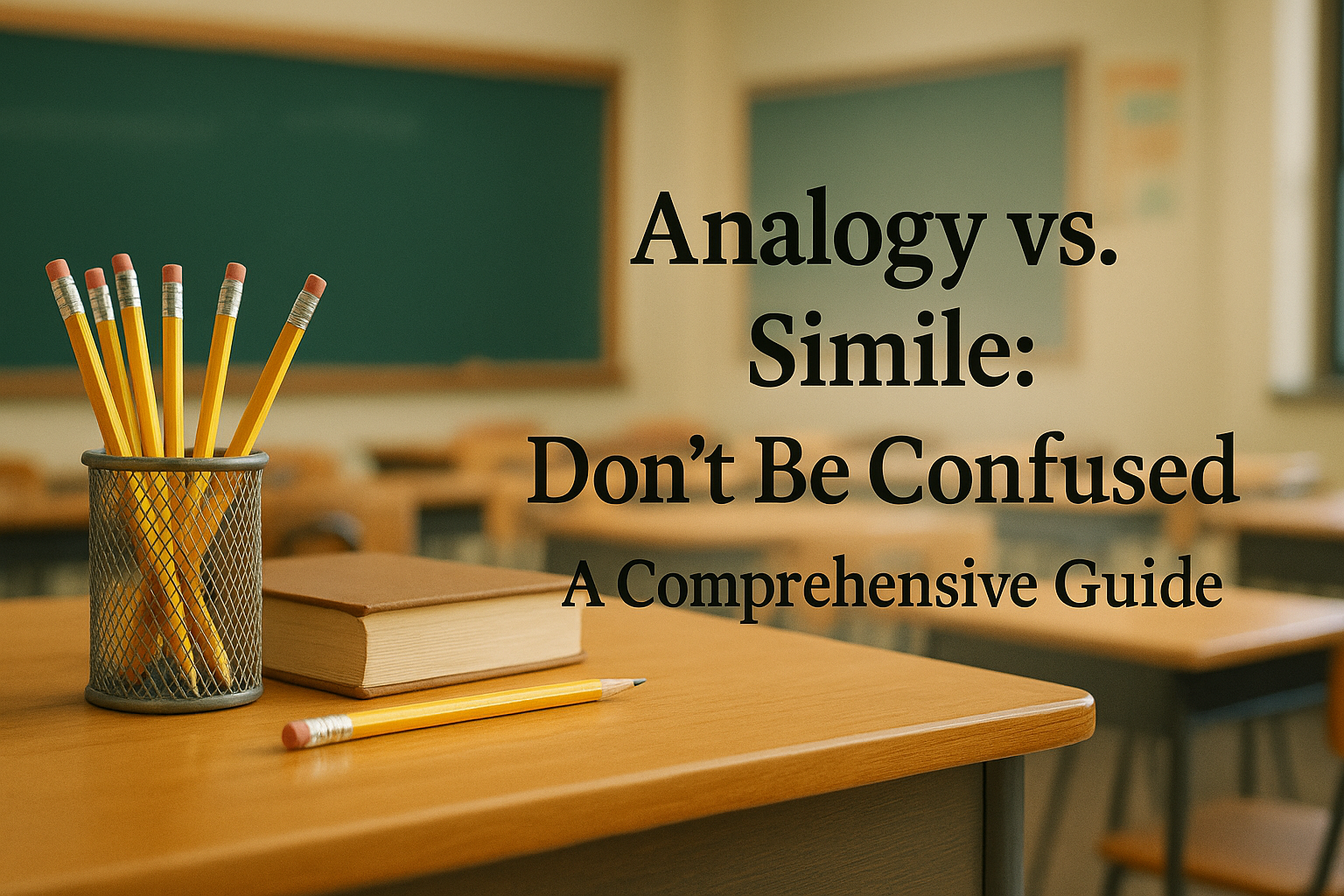Understanding the difference between analogy and simile is crucial for effective communication. While both are forms of figurative language, they serve distinct purposes and are used in different contexts. This guide delves into their definitions, differences, and practical applications to help you use them effectively in your writing.
What is a Simile?
A simile is a figure of speech that compares two different things using connecting words such as like or as. This comparison highlights a specific quality or characteristic shared between the two things.
Read More About This Article: When to Use a Hyphen: A Complete Guide
Examples of Similes:
- “Her smile was as bright as the sun.”
- “He runs like the wind.”
In these examples, the simile draws a comparison to create vivid imagery, making the description more engaging and easier to visualize.
What is an Analogy?
An analogy is a comparison between two things for the purpose of explanation or clarification. It explains how two different things are similar in a way that makes an idea or concept easier to understand.
Examples of Analogies:
- “Just as a sword is the weapon of a warrior, a pen is the weapon of a writer.”
- “Finding a good man is like finding a needle in a haystack.”
Analogies are often used to explain complex or unfamiliar concepts by relating them to something more familiar.
Key Differences Between Analogy and Simile
| Aspect | Simile | Analogy |
|---|---|---|
| Purpose | To create vivid imagery | To explain or clarify an idea |
| Structure | Uses like or as to make a direct comparison | Draws a parallel between two different situations or concepts |
| Length | Typically short and concise | Can be extended and detailed |
| Usage | Common in poetry and descriptive writing | Common in explanations, arguments, and teaching |
When to Use a Simile
Use a simile when you want to:
- Enhance imagery: Make descriptions more vivid and engaging.
- Simplify complex ideas: Help readers grasp concepts by comparing them to familiar things.
- Add emotional impact: Convey feelings or moods more effectively.
Example:
- “The news hit him like a ton of bricks.”
This simile conveys the shock and impact of the news.
When to Use an Analogy
Use an analogy when you want to:
- Explain a complex concept: Make difficult ideas more understandable.
- Draw comparisons: Highlight similarities between two different things.
- Persuade or argue: Strengthen your argument by showing logical relationships.
Example:
- “Learning to write is like learning to play a musical instrument; it takes practice and patience.”
This analogy helps readers understand the process of learning to write by comparing it to a familiar activity.
Common Mistakes to Avoid
- Confusing metaphors with similes: Remember, metaphors do not use like or as.
- Overusing complex analogies: While analogies are helpful, too many can confuse the reader.
- Using clichés: Phrases like “as busy as a bee” can be overused and lose their impact.
Conclusion
Understanding the difference between analogy and simile enhances your ability to communicate effectively. By using these figures of speech appropriately, you can make your writing more engaging and your explanations clearer. Remember, similes are best for vivid imagery and analogies for explanations and clarifications.
For further reading on figurative language and its usage, consider exploring resources like Merriam-Webster’s Grammar Guide and Writer’s Digest’s Grammar Rules.
